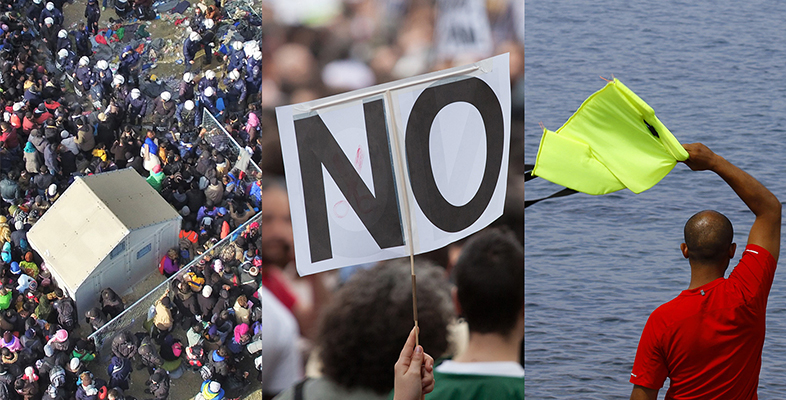3.4 Consolidation quiz
Before you go on to the next section, check your understanding of some key concepts that have been covered here.
Activity 6 Consolidation quiz
a.
(a) If people see themselves and others in terms of group membership, then they behave towards others as members of a group rather than as unique individuals
b.
(b) If people see themselves and others in terms of group membership, then they behave towards others as unique individuals as opposed to members of a group
c.
(c) If people see themselves and others in terms of group membership, then their personalities change
d.
(d) All of the above
The correct answer is a.
Discussion
A is the correct answer here. Social identity approaches argue that when people are in situations where they see themselves and others as members of a group (e.g. in a crowd protest situation), then they will behave towards others as if they too are members of a group, rather than as a collection of unique individuals. So, for example, at a football match you might identify with others who are supporting your team, and see those supporting the opposing team as members of a different group.
a.
(a) The ways in which crowds are important contexts for mobilising people’s social identities
b.
(b) The ways in which people’s actions in crowds are directed by their shared sense of group membership
c.
(c) The ways in which the actions of crowds are limited and directed by group norms about what is considered appropriate action in a given context
d.
(d) All of the above
The correct answer is d.
Discussion
D is the correct answer here. Reicher’s (1984) analysis of the St Pauls riots helped us to understand how people’s social identities (e.g. as members of the St Pauls community) can be mobilised in crowd protests. Reicher showed the ways in which people’s actions within crowds were related to this shared identity, in the sense that their actions were directed by shared group norms about what was considered appropriate in that context.
a.
(a) How social identity is a core individual motivational factor for engaging in protest
b.
(b) How social identity is formed as a result of early childhood experiences
c.
(c) How identities within a group may develop and change as a result of interactions between these groups
d.
(d) How social identities are not important for understanding events like mass political protests
The correct answer is c.
Discussion
C is the correct answer here. The ESIM starts from the position that crowd events are typically intergroup encounters, and examines how group identities may develop and change as a result of interactions between these groups.
a.
(a) group identification
b.
(b) group-based injustice
c.
(c) group efficacy
The correct answer is a.
a.
(a) group identification
b.
(b) group-based injustice
c.
(c) group efficacy
The correct answer is c.
a.
(a) group identification
b.
(b) group-based injustice
c.
(c) group efficacy
The correct answer is a.
a.
(a) group identification
b.
(b) group-based injustice
c.
(c) group efficacy
The correct answer is b.
a.
(a) group identification
b.
(b) group-based injustice
c.
(c) group efficacy
The correct answer is b.
a.
(a) group identification
b.
(b) group-based injustice
c.
(c) group efficacy
The correct answer is c.
